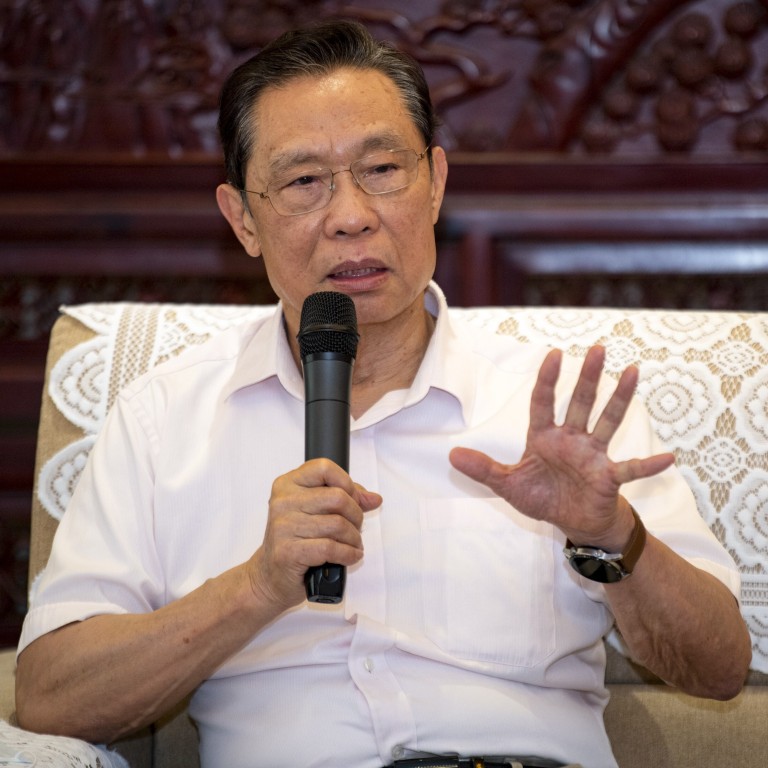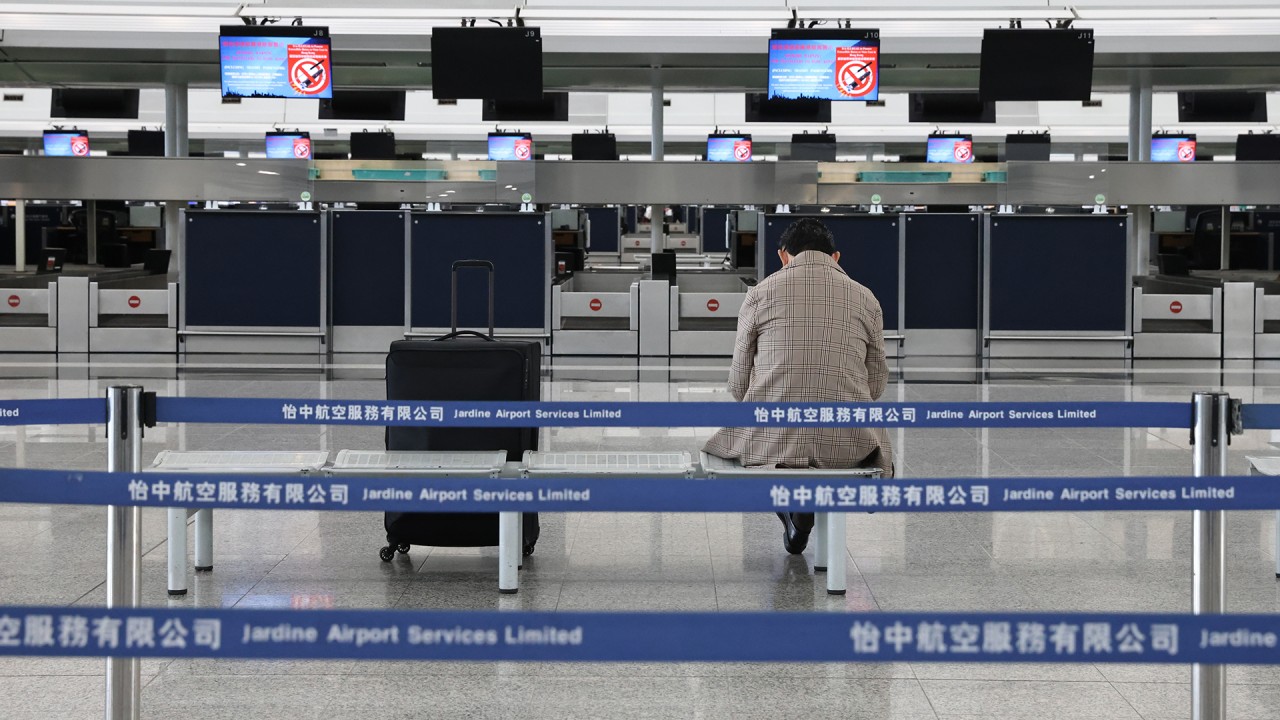
Coronavirus: China’s top disease expert lays down conditions for post-pandemic normal
- Limits on fatality rate and transmissions are key, Zhong Nanshan says, but first there must be herd immunity, effective drugs and no let-ups in epidemic control
- Virologist in Hong Kong voices doubts about the feasibility of that plan of action, whether for the city or mainland China
China can return to a post-pandemic normal if two tough criteria are met, the country’s leading epidemiologist has said.
“But realising these criteria is premised upon carrying out mass inoculation, establishing herd immunity, making community epidemic control the new normal and developing effective drugs [for Covid-19 treatment],” the state-held Southern Daily newspaper quoted him as saying at the 2021 Global Mayors’ Forum in Guangzhou.
What are Covid-19 antiviral pills and why are they important?
The reproduction number of a virus refers to the average number of people infected by an infected individual.
The global case fatality rate – the chance of an infected person dying from Covid-19 – is around 2 per cent, down from 2.2 per cent at the beginning of this year, according to data from Johns Hopkins University.
Zhong has previously spoken about the conditions under which pandemic-induced border restrictions could be relaxed, but his speech on Thursday was the first time he laid out specific criteria for this.
He has stressed earlier that whether China could reopen also depended on how well the pandemic was controlled in the rest of the world.
Cases have been on the rise globally in recent weeks, as more countries in Europe, North America and Asia switch to a “living with the virus” strategy.
While their fatality rates are low because sizeable sections of their populations have been vaccinated, absolute case numbers have risen, especially as winter looms in the northern hemisphere and vaccine hesitancy persists.
Achieving worldwide herd immunity through mass inoculation would take two to three years of global cooperation, according to Zhong.

01:04
Panic buying after China’s Covid-19 cases continue to surge
Zhong, a trusted adviser to the Chinese leadership on health care policies, was the first to announce human-to-human Covid-19 transmission was occurring in China in January 2020.
Although China had a case fatality rate of lower than 0.1 per cent, the figure was mainly the result of very low infections in the country, he pointed out.
“Our low case fatality rate was achieved under special conditions. It has not been tested by normal living conditions,” he was quoted as saying.
Developing drugs against Covid-19 would also be a key factor for when life could go back to normal after the pandemic, he added.
“It is precisely the zero-Covid policy that has given us time to understand the coronavirus better so we can organise our resources and develop vaccines,” Gao said at a medical expo in Sanya, in Hainan province, on Friday.
“The zero-Covid policy has enabled us to develop the vaccines, carry out inoculation, [and] get the relevant drugs and medical facilities ready. It has won us time.”
China is one of the few countries to have maintained a zero-Covid policy, meaning authorities stamp out infections whenever they arise with strict control measures such as repeated mass testing, lockdowns, and movement restrictions.
Jin Dong-yan, virologist and professor at the University of Hong Kong’s biomedical sciences school, however doubted whether the conditions proposed by Zhong could be realised, whether in mainland China or in Hong Kong.
The chief executive of Hong Kong, Carrie Lam Cheng Yuet-ngor, has closely followed the mainland’s zero-Covid policy, focusing on reopening the borders city’s borders with the rest of the country, even if it comes at the expense of resuming international travel.

04:22
Hong Kong’s Covid response is more ‘pursuing politics’ than ‘following science’
“What [Zhong] said is not achievable because, in China, the efficacy of the Sinovac and Sinopharm vaccines are still questionable,” Jin said, referring to the two commonly administered shots in the mainland.
“Whether herd immunity can ever be built with these vaccines is questionable, and one opinion is that, even if every eligible person is inoculated with Sinopharm or Sinovac, herd immunity cannot be built or is insufficient. That’s one concern.”
Zhong’s other criterion, a low case fatality rate, had already been achieved in areas where the vaccination rates were high, Jin said.
China approves mRNA vaccine booster trials
“Case fatality of Delta variants for vaccinated people in the UK is very low,” Jin said. “It is 0.14 to 0.18 per cent, by different calculations.”
The figures in Hong Kong and Singapore, where 66 and 85 per cent of the population, respectively, had been fully vaccinated, were low as well, he noted.
But the data from mainland China was difficult to calculate because many cases were asymptomatic or mild and there had been far fewer outbreaks than in other countries, Jin pointed out.
“You can’t just divide the number of deaths with the number of cases in the world because a lot of cases are undiagnosed and the rate is inflated.”


